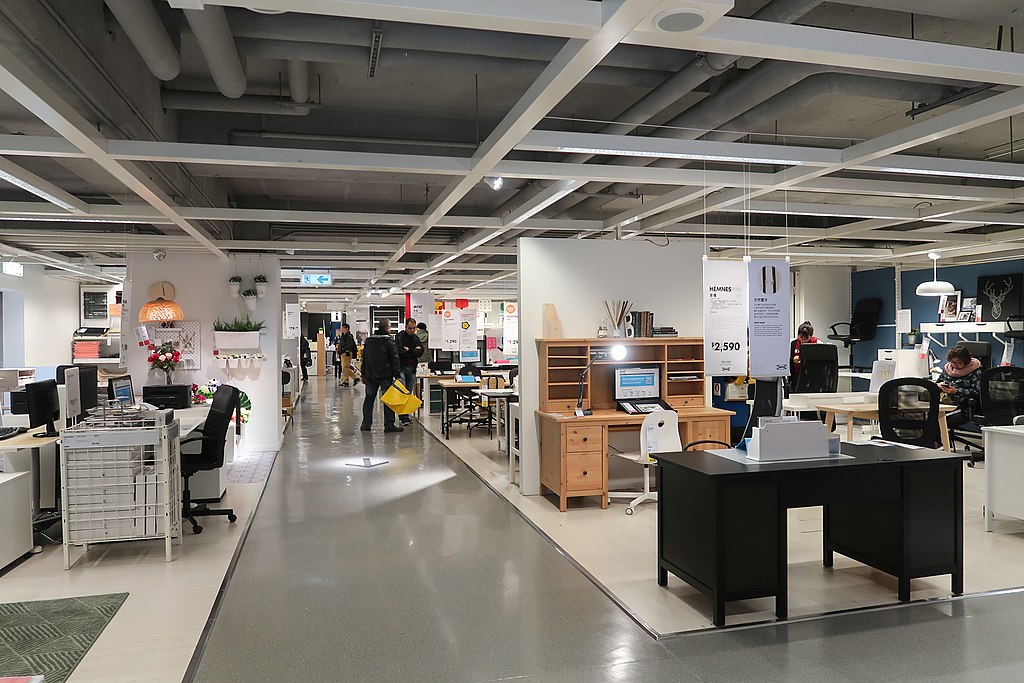The One Thing You Can’t Do in IKEA

For many adults, IKEA is like a playground. The furniture retailer sells thousands of items designed to be assembled at home by the customer, and each item — from beds and nightstands to bookshelves and desks — follows the same, clean, modern design. For shoppers, going up and down its aisles can be an adventure in its own right, as one’s imagination can take over with all the things you can build. Many stores have restaurants and even day cares, allowing adults to spend the better part of a day browsing (and ultimately, spending). Oh, and the build-it-yourself model also makes their products a little less expensive than the alternative.
As a result, the company has seen significant success over the last two decades. Today, IKEA is enormous — it employs more than 200,000 people, has more than 400 stores in more than fifty countries, and did more than $40 billion in revenue in 2019. And so is its stores. Per some estimates, an average IKEA runs 300,000 square feet (about 27,000 square meters), or about the size of five football fields or four soccer pitches. And with all that space, and all those aisle, and all those grown-ups looking to have a fun afternoon anyway, IKEA seems like a great place to play hide-and-seek, right?
Right.
But IKEA really, really doesn’t want you to.
The problems started in the summer of 2014. According to Bloomberg, “a spirited round of the children’s game attracted hundreds of people to a Belgian Ikea outlet” that year, and at first, IKEA was not only okay with it, but they helped out. As Fast Company explains, “a Belgian blogger named Elise De Rijck coordinated a hide-and-seek meet-up at her local Wilrijk store to celebrate her 30th birthday. She created a Facebook group and invited her friends—but soon, thousands of people had joined the group. Ikea Belgium got wind of the plan and instead of squashing it, offered Ikea’s full support, including extra staff and security to host the event.” Participants hid virtually eveywhere; per Bloomberg, “people were hiding in fridges, under stuffed toys, under Ikea’s blue shopping bags and even in the storage space under beds.”
But while IKEA saw this as a silly one-time event, other hide-and-seek fans wanted their chance. Other fans of the store began organizing massive games via Facebook, with numbers rivaling attendance at major sporting events. As Time reported, in early 2015, “32,000 people signed up for a Facebook event in Eindhoven; 19,000 in Amsterdam; and 12,000 in Utrecht.” News of the planned events spread widely, as evidenced by the number of RSVPs, and IKEA execs took notice — and action. Working with Facebook, IKEA had the events removed, effectively ending the dreams of the thousands of hiders and seekers.
Today, IKEA’s policy is clear — you can’t play hide-and-seek in its stores. While IKEA management probably won’t arrest your nine-year-old for ducking under some bed covers, they’ll definitely call the police if they get wind of a massive game being organized. In 2019, hiders and seekers tried to start a 3,000 person game in Glasgow, but ended up five seekers they weren’t counting on — the police. Per the New York Post, “five cops stayed at the shop for the entire day on Aug. 31 to gauge whether folks were browsing for a cheap desk — or actually hunting the perfect spot to hide.” Per the Post, no one was arrested.
Bonus fact: IKEA’s product names are in Swedish, and sometimes, that goes wrong. In 2004, the retailer introduced a new workbench for children, but you won’t find the product on their catalog any longer. The desk was named for the Swedish phrase for “speedy” or “full speed,” which, unfortunately, became “FartFull.”
From the Archives: Extreme Tag: Another playground game, but played by adults.
